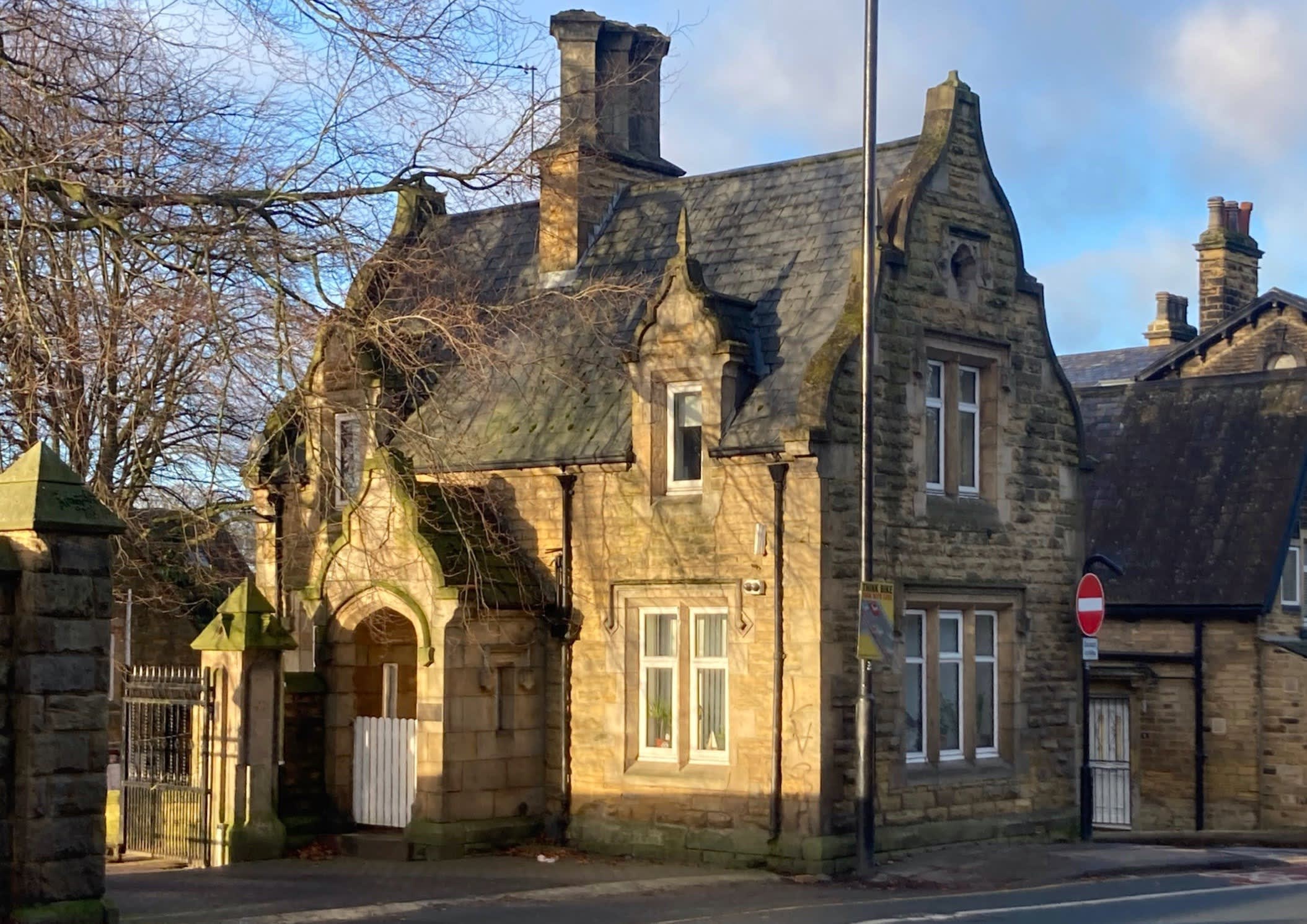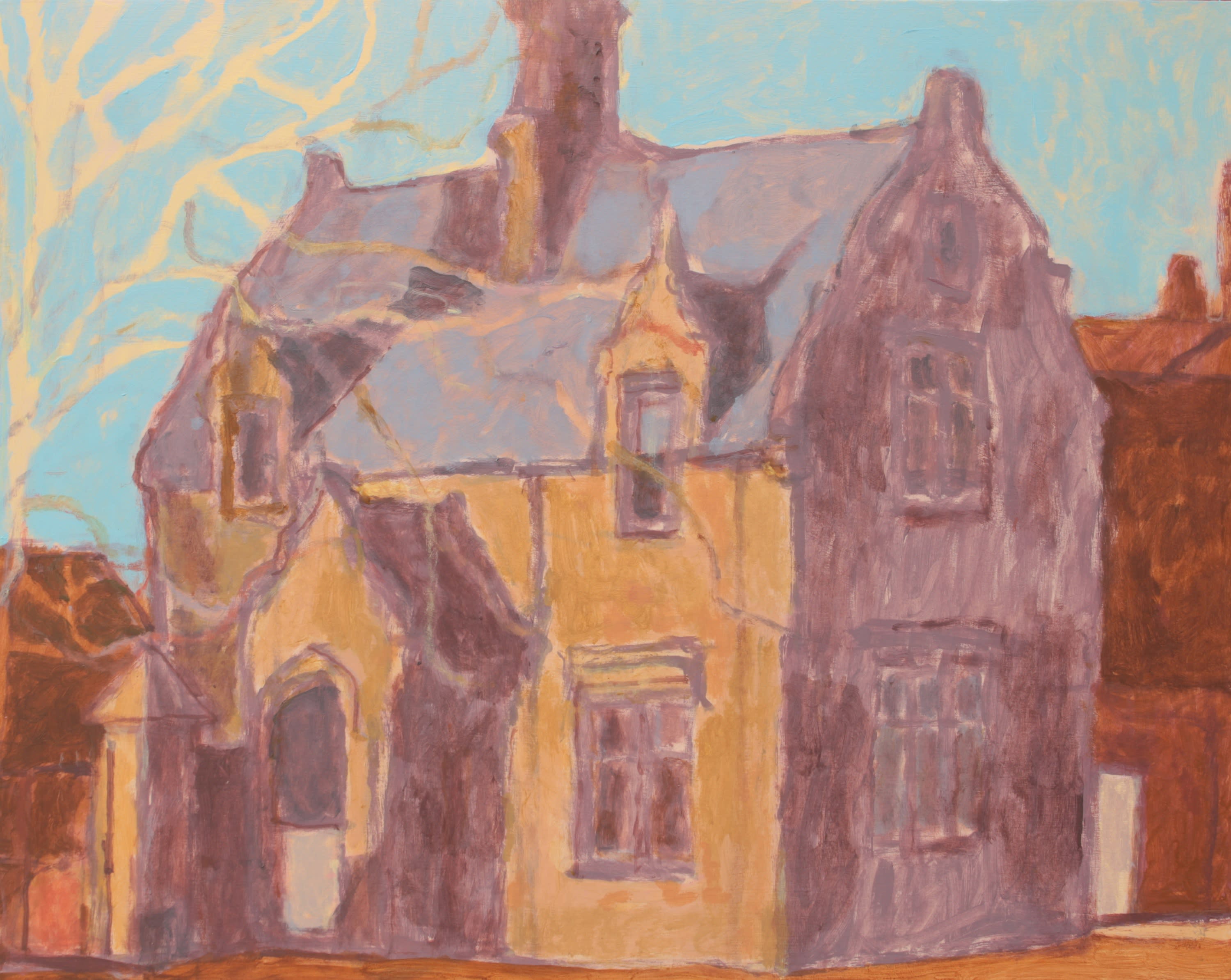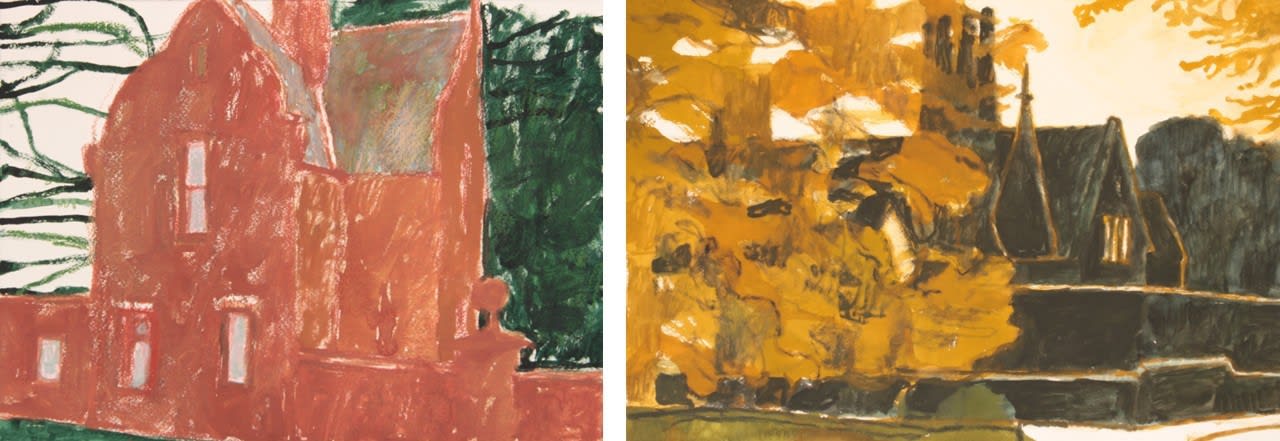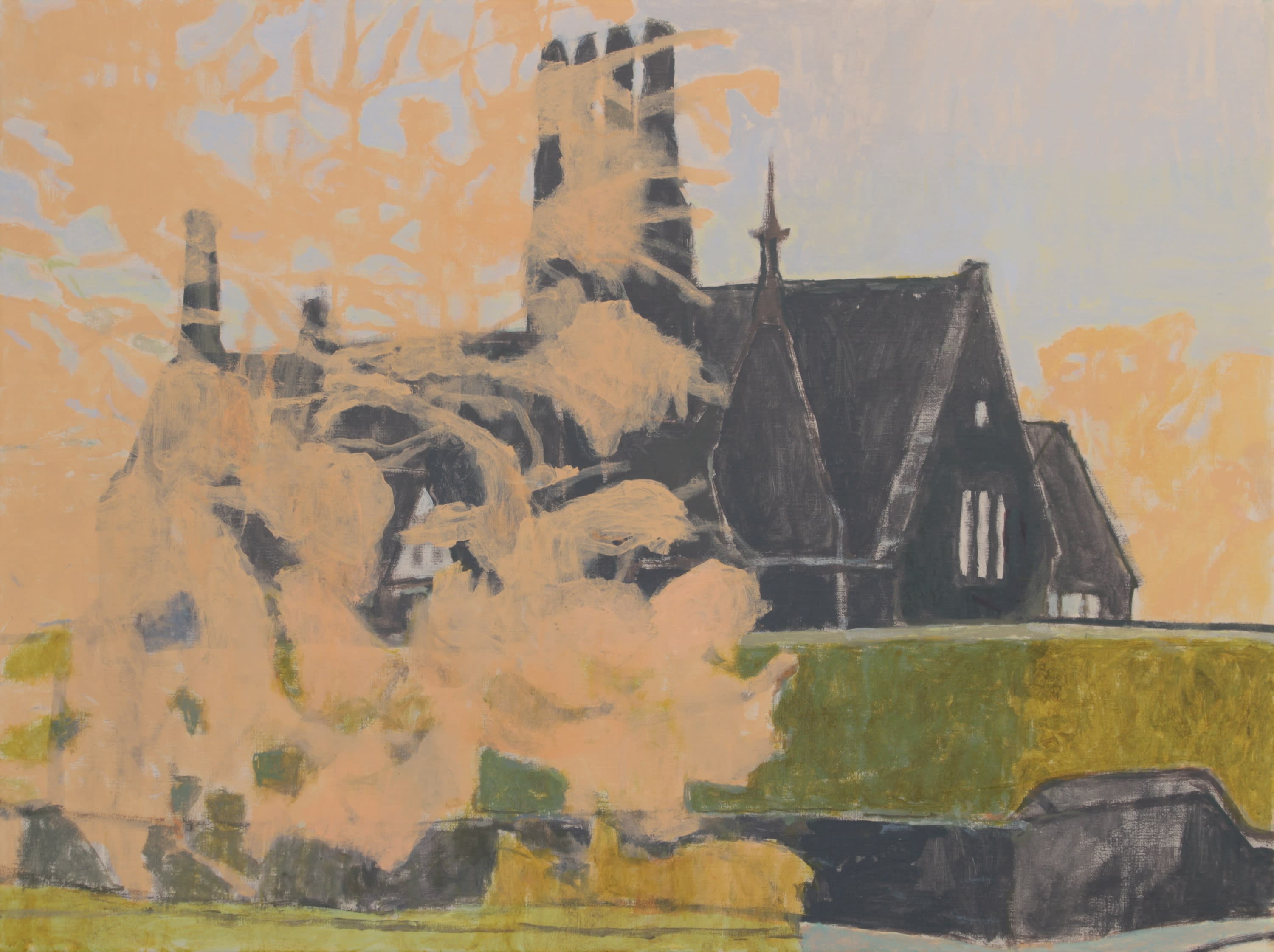Jonathan Hooper — one of the NEAC’s newest members, elected in summer 2025 — introduces his latest series of paintings of the Victorian gatehouses of Headingley, reflecting on their history as well as the ideas, process, and colour explorations behind his work.
This year, I have been trying something a little different with my painting. Since January, I have limited myself to one specific project – to document the twenty-nine remaining Victorian gatehouses in the Headingley area of Leeds. Normally my paintings show the suburban landscape around my home. I paint houses just like the ones I have lived in during my thirty-five years in Leeds: Victorian red-brick terraces and interwar semi-detached rendered houses. The gatehouses I am painting this year are quite different.
Headingley was gradually transformed over the late nineteenth and early twentieth centuries from a rural village into a densely populated suburb. Even those who don’t know Leeds may be familiar with its landscape of houses from the test cricket television coverage. Dotted across the area is a collection of strange little buildings, most of them built in stone, in an exaggerated architectural style with oversized chimneys and elaborate windows (the ‘gingerbread’ genre).
Although completely at odds with the buildings that now surround them, they are utterly characteristic of Headingley. They were originally the gatehouses of the large estates of the nineteenth-century manufacturers, merchants, and bankers of Leeds. These lodges were not only meant as public displays of the taste and wealth of their owners, but also as physical reminders of power and control. The estates were mostly sold off around the turn of the century, broken up and built over. (The semi-detached house I live in belongs to one of these developments.) Somehow, many of the gingerbread lodges have remained.

The lodge for Spring Bank, Headingley, Leeds
These lodges vary in style, form, and construction. Most are stone, but two are brick. Some are small single-storey structures; others are quite large, impressive houses in their own right. Some have steep roofs and overhanging eaves with stone corbels or carved wooden bargeboards; others have elegant Dutch gables or Tudor-style half-timbering. Some are simple rectangular or cross-shaped structures, others an individual assortment of unrelated forms. Some have been maintained in their original form, some left to become derelict, some extended or modified. One was even dismantled, moved, and rebuilt a hundred yards away from its original position.
Previous generations of Leeds artists and writers would have been familiar with the lodges: the Victorian artist John Atkinson Grimshaw, who painted night scenes of the lanes of Headingley and Roundhay with their stone walls and grand houses; the writers Arthur Ransome and Alan Bennett, who grew up in Headingley; J. R. R. Tolkien who lived in Headingley while teaching at the university, and drew inspiration for his writing from his walks through Headingley, Weetwood, and Meanwood Valley.
In neighbouring Bradford, J. B. Priestley set his play An Inspector Calls in a house very similar to the ones these lodges served. The gatehouses will also be very familiar to all those former Leeds students who have lived in these suburbs, and who walked past them (as I did) each day on their way to the university. In all of my paintings, I try to find an image that belongs as much to the past as the present – to see the permanent, unchanging character of the building behind its current appearance.

Lodge for Spring Bank, Headingley, Leeds, acrylic on board, 41 x 51 cm, February 2025
My paintings start with walking. The lodges are suited to these walks – many of them are built around the main A660, which leads out of the city past the university, through the traditional student suburbs of Hyde Park and Headingley, where I live, and then on out to Otley in Lower Wharfedale. Because of the practical difficulties of working on busy streets and pavements, I don’t paint outdoors. I walk and take photographs on my phone; I look and think — about the place, and about painting. It seems to me that the way we experience and think about the modern city is photographic, and I am looking for a photographic aesthetic in my paintings – something of the feel of photos or film stills.
At home, I look through these photos, crop them, and print them in black and white. I find colour in photographs a distraction. I don’t think it has anything in common with the direct physical and emotional experience of colour in the real world, nor with the way colour works in painting. I make a lot of drawings in watercolour, and through these, I slowly arrive at colour and compositional ideas for paintings.
This is an iterative process – as I work on the paintings, I go out walking again, think through the problems I am having with them, take more photos, and make more watercolours. Sometimes a painting will change quite a lot from the first attempt – although I want the finished painting to have something immediate and fresh about it, as if it were painted in one session.
In parallel with the change in my subject matter this year, I also made changes to my method: painting with acrylics rather than oils, using smaller brushes, spending longer over a painting. I have been approaching colour a little differently too. Partly this is the result of the other changes, but I have also made deliberate decisions about colour. One thing I have been exploring in these paintings is the family of pinks, burnt oranges, browns, greys, and violets that result from mixtures of different oranges and greens. And in my most recent paintings in this series, I have been looking at the contrasting forms of the trees that surround some of these lodges.

Watercolour drawings of Weetwood Villa Lodge, and Fox Hill Lodge, February and July 2025
I was very pleased to have one of these lodge paintings accepted for the NEAC Annual Exhibition this year. You can see it, along with another lodge painting, on the NEAC website. Now, halfway through the year, I have painted each lodge at least once – some of them just in small sketches, others in more finished paintings. What has interested me particularly in this project is learning more about the history of Headingley and its buildings. I don’t think there is such a thing as pure seeing – I think we can only properly see what we understand. And conversely, as we look, we come to understand more.
Find out more about Jonathan Hooper on his NEAC artist profile page, where you can also view & buy a selection of his artworks.

Lodge for Fox Hill, Weetwood, Leeds, acrylic on canvas, 46 x 61 cm, July 2025

